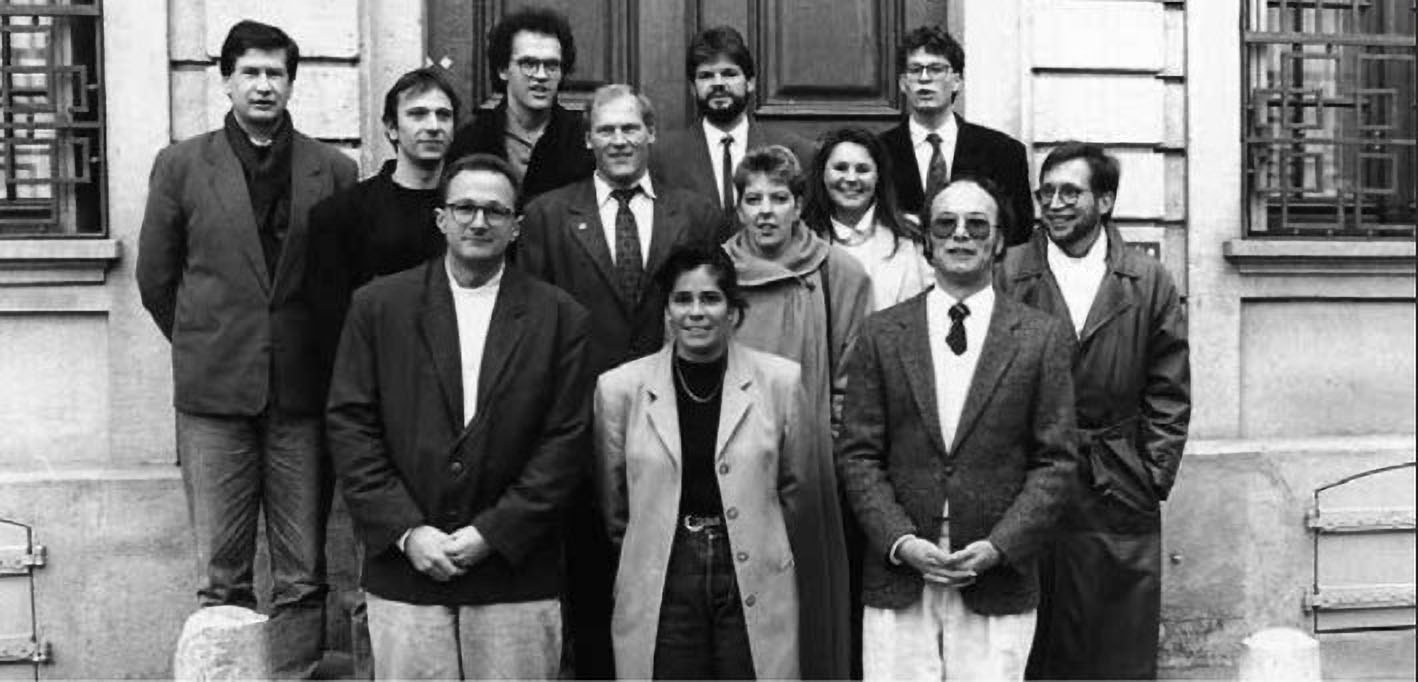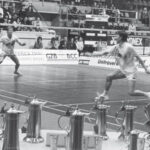17. November 2024
1991-1995: Ready, Set, Go

In 2025, the Badminton Swiss Open would be taking place for the 35th time – if it weren't for the one edition that could not be held in 2020 due to the pandemic. However, as this edition was already fully planned and organised, we can still talk about 35 editions with a clear conscience in view of the anniversary year.
In the following weeks, we will therefore take a short journey through the past – starting with the year in which it all began:
A clown act, a budget of 150,000 Swiss francs and organised outside the national association – these are the unusual circumstances under which the Badminton Swiss Open begin their success story in 1991.
Linda Harzenmoser
When it becomes clear in 1990 that the International Swiss Championships (ISM), the then renowned badminton tournament in Lausanne, will no longer take place, a jolt goes through the Swiss badminton world. Almost overnight, twelve badminton enthusiasts from the Basel region decide to organise a tournament themselves. Rolf Tittmann, Daniel Egli, Christian Wackernagel, Werner Baumgartner, Liselotte Blumer, Daniel Steiner, Maya Baumgartner, Moni Salathé, Marc Salathé, Charles A. Keller and Erich Bader take on the huge task of organising a major international badminton tournament within a few months, with a small budget and little experience.
They succeed – and from the first event in 1991, the Badminton Swiss Open enjoye a huge media presence. Swiss television and local media report on the tournament, and the mostly European players attract several thousand spectators to the small St. Jakobshalle. As early as 1992, the Swiss Open succeed in positioning themselves as a qualifying tournament for the Olympic Games in Barcelona, which take place in the same year, which naturally makes competing in Basel even more attractive for the badminton elite. In addition, a partnership with the Ciba-Geigy Group is entered into, allowing free entry on Fridays and thus keeping the tournament popular with the public.
With the third organisation in 1993, it slowly becomes clear that this could be a long-term thing: Ciba become the title sponsor and investments are made in the infrastructure. For example, a larger foyer with more stands are set up, also a VIP lounge and sponsor boxes, so that the Badminton Swiss Open become more and more promising for the future. The tournament also gains visibility in the city of Basel, particularly with advertising in trams, larger posters and, last but not least, its presence at the city festival to celebrate 100 years of FC Basel.
In 1994, the time has come to move from the small to the large St. Jakobshalle. This makes it possible for the tournament to play on a centre court for all tournament days and to offer fixed grandstands with 3000 seats. In sporting terms, this year is probably the last in which the Scandinavian players dominate – more and more strong teams from Asia also take part.
The participation of the Asian teams is also supported by the opportunity to organise the Badminton Swiss Open on a better date, namely close to the top tournament All England. Because of this, athletes who have to travel a long way are able to stay in Europe and compete in Basel.
After these first few years and the modest beginnings, however, it is clear that the Badminton Swiss Open are only just getting started.








